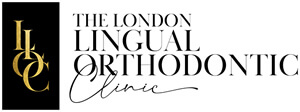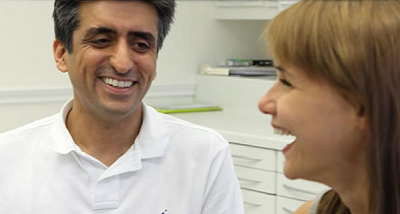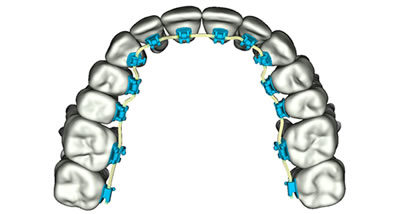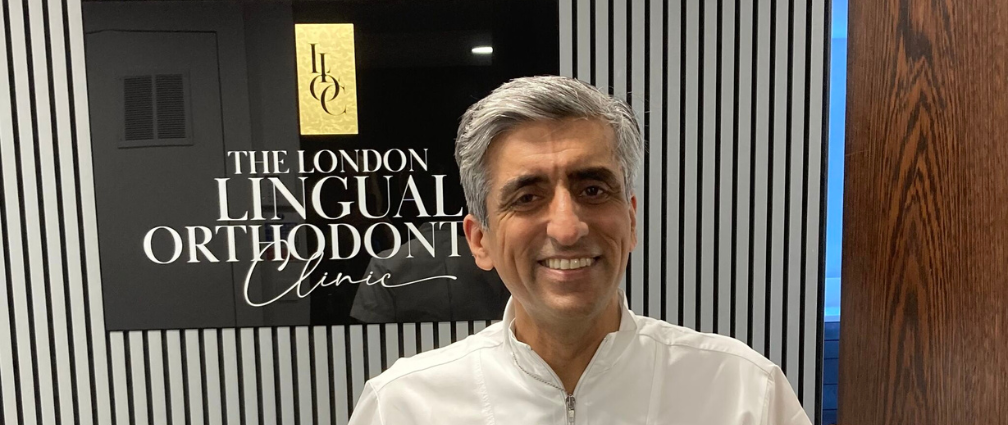- Angles classification – Edward Angle was an American dentist who is regarded as the father of modern-day orthodontics. He introduced classifications in the early twentieth century to define the different relationships between the teeth and jaws. He also coined the word malocclusion, to mean a poorly aligned bite
- Anterior – meaning ‘at the front’; in dentistry, anterior teeth are the incisor and canine teeth
- Apex – the tip or bottom end of the tooth’s root
- Appliance – another word for a brace, it can be fixed or removable
- Arch – we all have two dental arches, upper and lower. most patients wear braces on both arches but sometimes on a single arch
- Arch form – the shape of the dental arch
- Arch wire – the wire attached to the brackets to move teeth to a new position
- Attrition – wearing away of the surfaces and edges of teeth
- Band – a metal ring place on back teeth to help attach brackets
- Bite plane – an appliance used to help separate the teeth
- Bond-up – an important appointment at the start of treatment when brackets are glued to teeth
- Bracket – this can be of gold, metal or ceramic and holds the arch wire which is connected to all the brackets in the arch
- Bruxism – the grinding of teeth
- Calculus – also known as tartar, a hard layer which builds up on your teeth if you fail to brush and floss adequately. Turns to plaque
- Cast – a model of the patient’s teeth and dental arch for the orthodontist to study
- Cephalometric X-ray – an X-ray which shows the profile of your skull and the soft tissues of the face. It is a diagnostic x-ray and the measurements it provides can help plan orthodontic treatment.
- Cementum – the layer of hard tissue covering the root of the tooth
- Crossbite – where some or all of your upper teeth bite inside your lower teeth when closing your teeth together
- Decalcification – the loss of calcium in your teeth, causing marks to appear on the enamel. This can occur during orthodontic treatment in patients who do not brush their teeth properly
- Deep bite – an excessive overbite, when the upper teeth vertically overlap the lower teeth
- Diastema – a space between two teeth
- Elastics – these are small rubber bands which hook between a bracket in the upper arch to a bracket in the lower arch. They help facilitate tooth movement and to settle the bite between the upper and lower teeth
- Embouchure – the way a wind instrument player holds their lips in order to play
- Frenum – a band of tissue inside the mouth which links the lip to the jaw. Beneath the upper lip it’s known as the labial frenum and below the tongue, it’s known as the lingual frenum
- Gingivae – another name for your gums
- Impacted – a word to describe teeth which have not grown into the mouth normally. This usually occurs with the canine teeth and wisdom teeth.
- Interproximal reduction (IPR) – gentle filing between the teeth to create space between the teeth. It may be used when there is mild crowding between the teeth or as part of the fine-tuning of the smile to minimize or eliminate dark triangles.
- Labial appliances – braces placed on the front of the teeth
- Lingual appliances – braces placed invisibly behind the teeth
- Malocclusion – poor positioning of your teeth
- Occlusion – how the upper and lower teeth meet and bite together
- Orthognathic surgery – an operation which breaks the jaw to improve the bite, usually carried out by a surgeon in hospital in association with orthodontics
- Open bite – when the upper teeth and the lower teeth do not overlap and meet together
- Overbite – the vertical overlap of the upper teeth over the lower teeth
- Overjet – horizontal projection of upper front teeth over the lower teeth
- Palatal arch – a wire fitted between the molar teeth across the palate or roof of the mouth
- Panoramic X-ray – an X-ray which shows all the teeth, including the roots, the underlying bone and the jaw joints.
- Periodontics – the dental specialty concerned with gums
- Plaque – a sticky layer of bacteria and debris on your teeth. Normally removed by good brushing. If not removed properly it may cause tooth decay or gum disease
- Posterior – at the back of the mouth, usually premolar and molar teeth
- Quadhelix – an appliance is worn on the roof of the mouth, attached to molar teeth and expands the dental arch, usually used to help correct a crossbite
- Radiograph – another name for an X-ray
- Relapse – when the teeth which have been moved orthodontically return to their original position
- Retainer – worn after treatment to hold the teeth in position, can be fixed or removable
- Retruded – when your front teeth tilt inwards, towards the back of the mouth
- Separator – a plastic or metal loop usually used to separate teeth at the back so that bands can be fitted onto teeth
- Sleep apnoea – a condition where breathing is disturbed during sleep and can be cured by orthodontic treatment
- Somnowell– the treatment we offer here to help patients who snore or suffer from sleep apnoea
- Space maintainer – an appliance used to hold open the space left by the loss of a tooth
- Sterilisation – an essential aspect of all dental and specialist practices, sterilization procedures involve cleaning instruments to prevent cross-contamination
- Stop – an attachment placed on the wire to stop the wire sliding
- Study models – plaster or digital casts of the teeth which allow the orthodontist to study the patient’s teeth and bite
- Supernumerary – an extra tooth
- Temporomandibular Joint – the joint between the lower and the skull, known as the TMJ. If you have a problem or dysfunction, the condition is TMD
- Tipping – altering the angle of a tooth as part of orthodontic treatment
- Torque – altering the position of a tooth as part of orthodontic treatment
- Tracing – the cephalometric tracing identifies the structures and landmarks used for orthodontic treatment
- Traction – applying force to teeth to move them
- Traumatic occlusion – an abnormal bite causing damage to the teeth within it or the supporting gums
- Typodont – a plastic model of a typical mouth used for teaching or education
- Wax – prevents braces from rubbing the inside of the mouth
Bowen’s ProSomnus Sleep Appliance
Hear from Bowen as he describes his experience with the ProSomnus Oral Sleep Appliance and the improvement it has had on the quality of his sleep.













